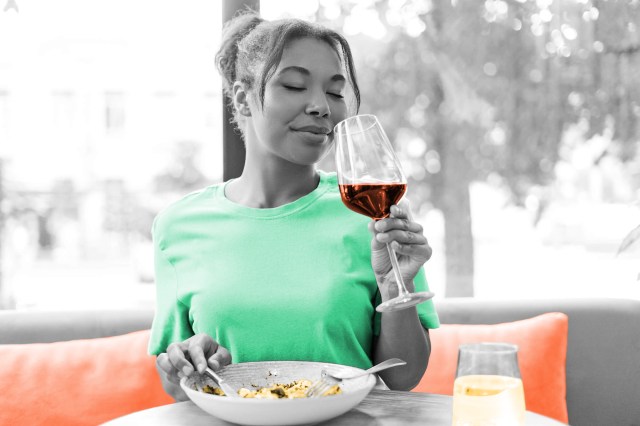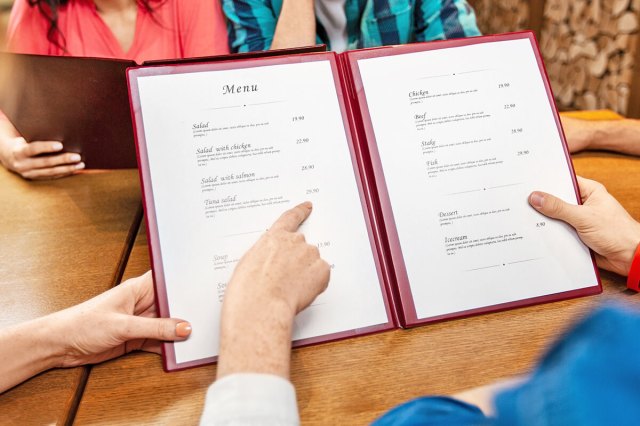
They Use Menu Psychology
What catches your attention when you read a menu isn’t coincidence – it’s science. Every element of a menu is carefully chosen and research-based, from what colors are used to how many menu items are offered. For example, restaurant menus that feature appetite-stimulating colors such as orange, red, and yellow can effectively pull a customer’s eye to certain areas of the menu. The menu’s color scheme, such as blue for a seafood restaurant or green for a farm-to-table experience, can also help define the restaurant’s brand and subconsciously build anticipation for the meal.
When it comes to the number of dishes offered, research suggests that fewer is better and that seven dishes per section is the magic number. Limiting the number of items offered keeps diners from feeling overwhelmed by choice and helps guide them toward specific, often high-profit-margin selections. This careful balance is designed to craft a menu that’s visually appealing and simple to read in order to enhance your dining experience.
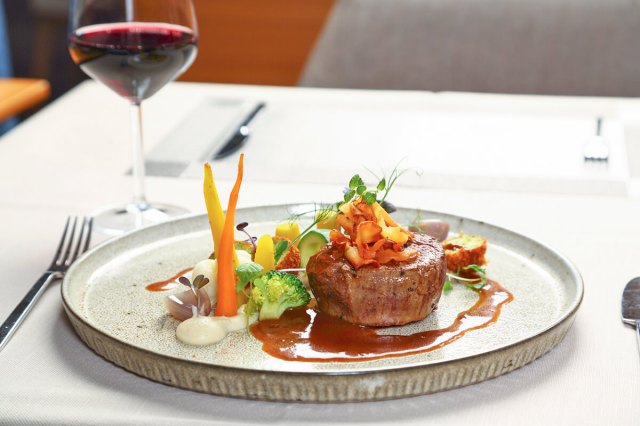
They Know the Power of Buzzwords
Restaurants also use psychology to entice diners and encourage higher spending through the use of buzzwords. We typically ignore outrageous claims such as “the world’s finest ingredients” or “the best steak you’ve ever had,” but our interest may be piqued by appealing adjectives that spark the imagination and promise an elevated dining experience, such as “grass-fed,” “fire-roasted,” and “stone-ground.”
Detailed and engaging menu descriptions can also create a unique narrative and influence diners in a variety of profitable ways. We may feel nostalgic when we read a description of an apple pie that starts with a “golden, flaky crust just like Grandma used to make.” Our sense of adventure may be stimulated by a free-range chicken dish “marinated in sun-drenched spices from the Mediterranean.” Alternatively, we might be drawn to the familiarity of a beloved brand name, such as “a creamy and decadent Oreo cheesecake.”

They Charm Us With Strategic Prices
We have a lot of options when it comes to where we dine, so restaurants do their best to make sure their prices are competitive. They also employ psychological tactics when listing the prices of menu items, such as the common practice of not using currency signs. For instance, a salad that costs nine dollars might be listed as “9” rather than “$9.00.” Some restaurants even spell out the prices of menu items, which research shows can encourage people to spend up to 30% more.
Restaurants also use strategic pricing techniques to appeal to customers. Rather than listing prices in a column next to menu items, which forces you to compare prices, the cost of dishes will be listed directly below the description of the dish and in the same font. This directs your attention to the description and encourages you to skim over the price. When we do notice the price, it may be in the form of charm pricing, or left-digit effect, a technique businesses use to create perceived value. When a menu item is priced for $9.99 instead of $10.00, the brain reads the number nine first and interprets the cost of the dish as nine dollars.
More Interesting Reads
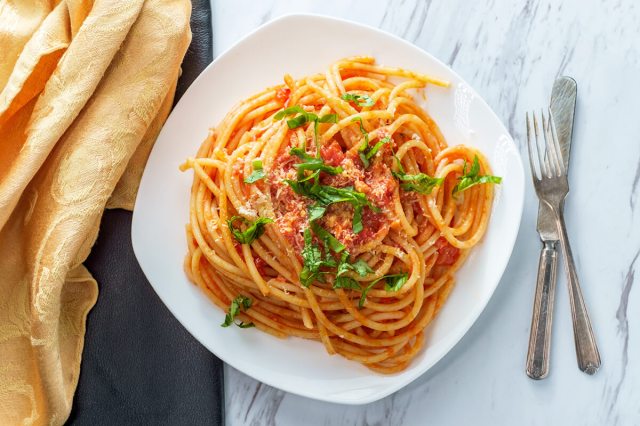
They Use the Decoy Effect
In the restaurant industry, a high-profit-margin item is one that’s low-cost to make but that’s priced relatively high by comparison, resulting in a significant profit margin. For example, a pasta dish such as spaghetti with marinara sauce is inexpensive to prepare, but restaurants can charge a premium due to presentation and perceived value. To attract your attention to these profitable items, restaurants will often list them on the menu near a much more expensive “decoy” item.
Restaurants know most people likely won’t order the most expensive entrée on the menu, but they do expect you to notice how expensive it is. Known as the decoy effect, this psychological trick can make us spend more than we intend because we make our decision based on what seems like the more reasonable choice. For instance, when a high-profit item such as the aforementioned pasta dish is placed near a decoy item, such as a wagyu beef dish, the pasta dish seems even more appealing — and affordable. A couple well-placed high-ticket items on a menu can actually convince people to spend more than they would if every item was around the same price.
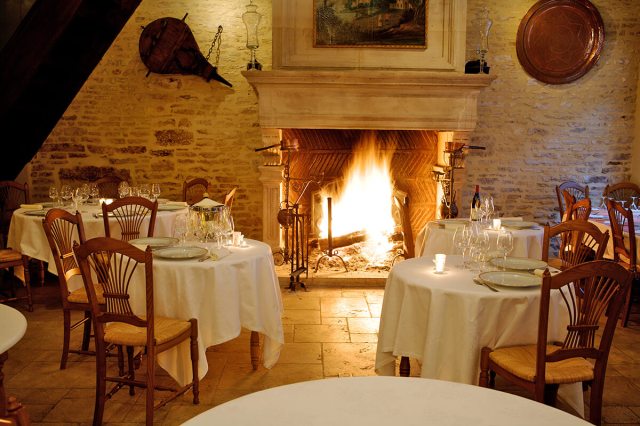
They Create An Ambience That Makes Us Want to Linger
From the color of the décor, to the brightness of the lighting, to the type of the music they play, restaurants are constantly looking for ways to create a welcoming environment that encourages you not only to linger, but also to spend more money. If your favorite restaurant is decorated in shades of red, it’s because that color has been shown to increase heart rate, quicken breathing, and stimulate the appetite, encouraging people to eat more than they typically would when surrounded by other colors.Researchers also know that light and sound can influence how we dine. Softer lighting and music have been linked to restaurant diners consuming fewer calories and enjoying their food more. Diners connect lower levels of light with higher prices and higher service quality, while slow, ambient music inspires more leisurely dining, which can ultimately result in higher spending. If people are eating slowly, restaurants can raise prices and cut menu portions to save money on ingredients, knowing diners will still feel satisfied when they leave.

